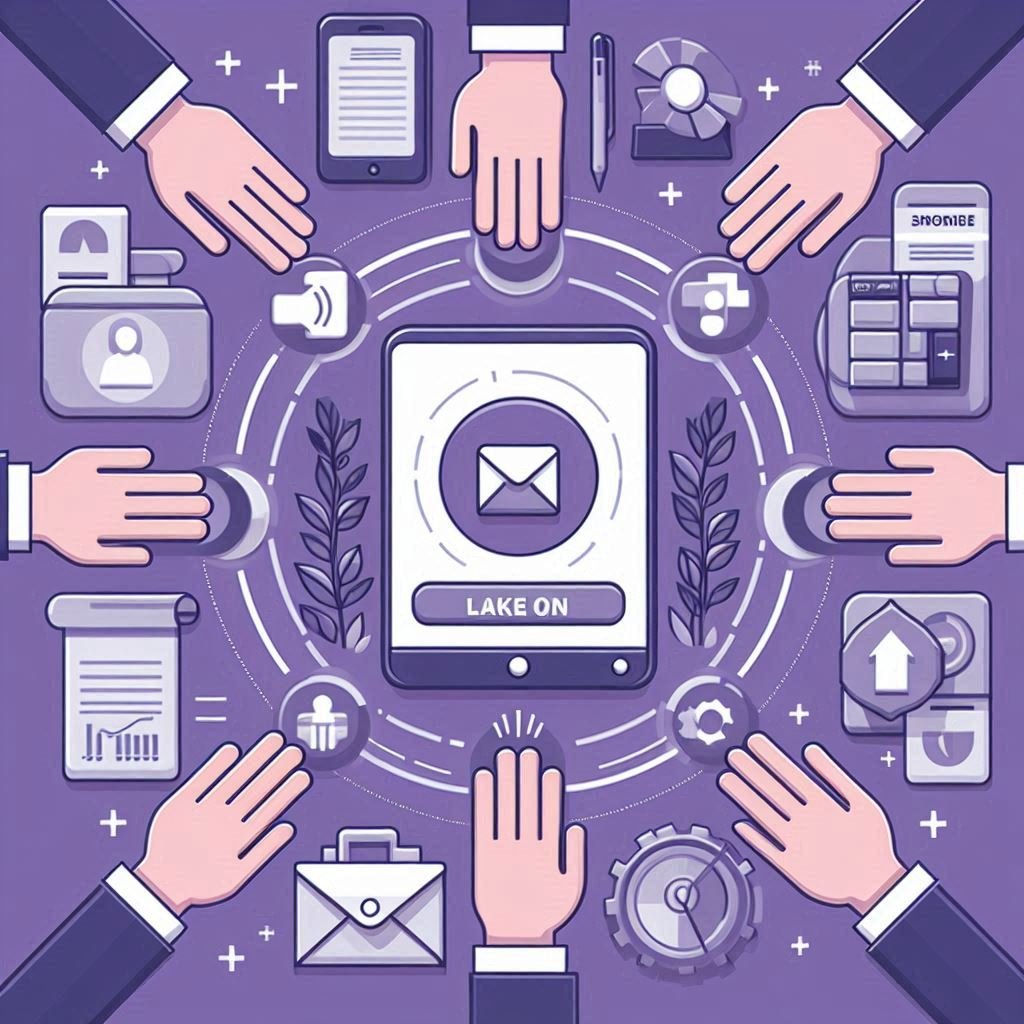In sales, email marketing remains a cornerstone strategy, not just for its direct reach but for the personalized touch it can add to customer interactions. Email marketing software streamlines this process, providing tools to automate, track, and optimize email campaigns effectively.
Whether you’re a seasoned sales professional or just starting out, understanding the nuances of different email marketing platforms can significantly elevate your sales game.
The choice of email marketing software can make or break your marketing efforts. With a plethora of options available, each offering unique features and capabilities, selecting the right tool requires a thoughtful approach.
Related: What Email Finder Tools Work Best to Boost Lead Gen and Sales?
This article aims to explore various types of email marketing software (both free and paid) that sales professionals commonly use, helping you navigate through your options with greater clarity.
How Email Marketing Works in Sales Strategies

Email marketing isn’t just about sending out promotions and newsletters. It’s a strategic tool integrated deeply within the sales process to nurture leads, build relationships, and close deals.
By regularly engaging with prospects through tailored content, sales professionals can keep their offerings top of mind, gently guiding potential customers through the sales funnel.
Related: How Lead Gen Pros Find Valid Emails Using LinkedIn Sales Navigator
Keep in mind that the effectiveness of email marketing hinges on its integration into broader sales strategies. It works best when synchronized with other sales and marketing activities, ensuring a cohesive experience for prospects.
For instance, email campaigns can be timed to follow up on initial sales calls or to deliver targeted content that addresses specific customer pain points identified during earlier interactions.
Free vs Paid Email Marketing Tools
Navigating the choice between free and paid email marketing tools often comes down to the specific needs and scale of your sales operations. Free tools can be incredibly beneficial for small businesses or startups that are still finding their footing in the market.
They offer basic functionalities like sending emails, managing contacts, and sometimes even automating simple tasks.
However, as your business grows, the limitations of free tools can become apparent. Paid email marketing software often provides enhanced features such as advanced automation, detailed analytics, A/B testing, and higher deliverability rates which are crucial for scaling operations.
The investment in paid tools can thus translate into significant returns through more sophisticated campaign management and deeper insights into customer behaviors.
Benefits of Free Tools

One advantage of using free email marketing tools is cost-efficiency, which is particularly appealing to new or small-scale businesses.
These tools provide a risk-free way to explore email marketing’s potential without a financial commitment. Additionally, many free tools are designed with simplicity in mind, making them user-friendly for those who may not be very tech-savvy.
Side note: while free tools offer basic functionalities, they can sometimes include powerful features like segmentation and analytics, which are a big plus for businesses still in the experimental phase of their marketing strategies.
This allows sales professionals to learn and understand customer engagement patterns without upfront investment.
When to Upgrade to Paid Solutions
Upgrading to a paid email marketing solution is advisable when your business starts to feel the constraints of the free tools.
This might be in terms of the size of your email list, the frequency of your communications, or the need for more sophisticated marketing features like detailed segmentation, CRM integrations, and comprehensive analytics.
A benefit here is that paid platforms often provide greater customization and branding options, which can enhance the professionalism of your communications. Moreover, they offer better customer support, crucial for resolving any issues quickly and efficiently, ensuring your marketing efforts are not hindered by technical problems.
Top Free Email Marketing Software Used by Sales Professionals
When it comes to free email marketing tools, several names stand out for their robust features and reliability.
Mailchimp, for instance, is highly favored for its user-friendly interface and suite of tools that include basic automation, templates, and analytics. It’s an excellent starting point for those new to email marketing.
Another popular choice is Sender, which offers some of the best deliverability rates in the industry. Its free plan includes advanced features like automation, transactional emails, and detailed performance reporting. For sales professionals, this means not just sending emails, but ensuring they reach the inbox of potential customers and provide actionable insights.
Best Paid Email Marketing Platforms for Enhanced Sales Efforts
Transitioning to paid email marketing platforms unlocks a new level of potential for sales strategies. Platforms like HubSpot and Salesforce Pardot offer extensive tools that not only manage email campaigns but also integrate seamlessly with CRM systems, providing a holistic view of customer interactions.
If you run a startup or business you are looking to scale for years on end, these are your two best options simply because they integrated so well with their CRMs.
These platforms are designed to scale with your business, supporting more complex sales cycles and larger customer databases.
Another formidable option is Marketo, known for its lead management capabilities and robust automation features. It allows sales professionals to craft precisely targeted campaigns based on detailed customer data and engagement history. This precision can lead to higher conversion rates and more effective sales strategies.
How to Choose the Right Email Marketing Software
Choosing the right email marketing software is a pivotal decision that requires a blend of understanding your current needs and anticipating future growth. Start by assessing the size of your email list and the complexity of your marketing campaigns. Are you looking for basic functionality or do you need advanced features such as predictive analytics and sophisticated automation?
One key factor to consider is usability. The software should have an intuitive interface that your team can use efficiently without a steep learning curve. Also, consider the integration capabilities of the email marketing tool. It’s crucial that it integrates seamlessly with other tools you are using, such as your CRM and analytics platforms.
This integration facilitates a smoother flow of data across your marketing and sales ecosystem, enhancing the effectiveness of your campaigns.
My Secret Sauce – Integrating CRM with Email Marketing for Sales Domination
Integrating your Customer Relationship Management (CRM) system with your email marketing software is like linking the heart to the brain of your sales operations. This integration allows for a seamless transition of data between marketing and sales, ensuring that both teams have all the information they need to attract and retain customers effectively.
A big plus of CRM integration is the ability to personalize communication at a very detailed level based on the customer data stored in your CRM. For instance, you can automate email campaigns that are triggered by specific customer actions or milestones, such as downloading a white paper or attending a webinar.
This not only increases the relevance of your messages but also enhances the timing, which can significantly boost conversion rates.
Tip: Leveraging Email Analytics for Sales Growth is Key
Email analytics are crucial for refining your marketing strategies and enhancing sales outcomes. By analyzing metrics such as open rates, click-through rates, and conversion rates, you can gain insights into what resonates with your audience and what doesn’t. This data-driven approach allows you to make informed decisions, optimizing your email campaigns for better performance.
Keep in mind, it’s not just about the numbers. Analyzing the patterns behind the data can provide you with insights into customer behaviors and preferences, enabling you to tailor your strategies more effectively.
For example, you might find that emails sent on Tuesday mornings have the highest open rates, or that emails with personalized subject lines result in higher engagement. Leveraging these insights can be a game changer in your sales efforts.
Conclusion and Final Thoughts
In conclusion, the right email marketing software can transform your sales strategy, making it more efficient and impactful. Whether you choose a free tool to get started or invest in a paid solution to leverage advanced features, the key is to select a software that aligns with your business goals and integrates well with your existing tech stack.
Remember, the goal of email marketing is not just to sell, but to build relationships. A thoughtful approach to choosing and utilizing email marketing software—considering factors like CRM integration and analytics—can help you nurture these relationships effectively.
By staying attuned to the needs and behaviors of your prospects and customers, and continuously optimizing your strategies based on data, you can achieve sustained sales growth and success.





